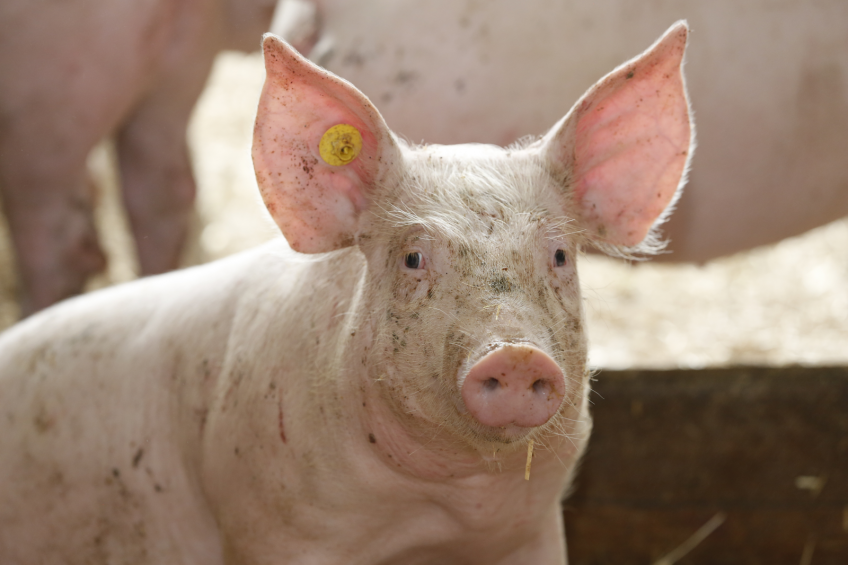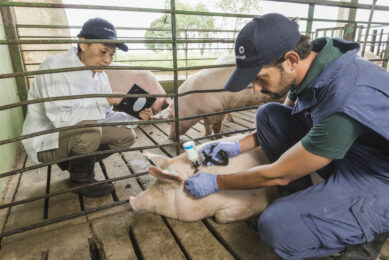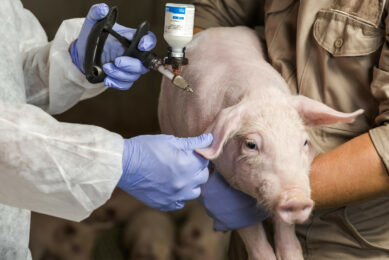What to do with Porcine Respiratory Disease?

A recent scientific article has conveniently summed up which vaccination strategy to follow in case of Porcine Respiratory Disease Complex. Establishing co-infections is key to determining a treatment.
The article, which appeared in The Veterinary Journal, reviews current practices how to act when it comes down to Porcine Respiratory Disease Complex (PRD).
Multifactorial and complex pig disease
In the article, author Chanhee Chae from Seoul National University, South Korea, explained that porcine respiratory disease is a multifactorial and complex disease caused by a combination of infectious pathogens, environmental stressors, differences in production systems, and various management practices; hence the name Porcine Respiratory Disease Complex (PRDC) is used.
The author pointed to Porcine Circovirus type 2 (PCV2), Porcine Reproductive and Respiratory Syndrome virus (PRRSv), and Mycoplasma hyopneumoniae (M. hyo) being considered to be the most important pathogens that cause PRDC.
Well documented respiratory pathogens
Chae continued saying that although interactions among the 3 major respiratory pathogens are well documented, it is also necessary to understand the interaction between vaccines and the 3 major respiratory pathogens.
He stated that PRRSv and M. hyo are well known to potentiate PCV2-associated lesions; however, PRRSv and mycoplasmal vaccines can both enhance PCV2 viraemia regardless of the effects of the actual PRRSv or M. hyo infection. He continued writing that on the other hand, M. hyo potentiates the severity of pneumonia induced by PRRSv, and vaccination against M. hyo alone is also able to decrease PRRSv viraemia and PRRSv-induced lung lesions in dually infected pigs.
Veterinary advice for PRDC
Summarising, his veterinary advice was as follows:
• If a farm is co-infected with PCV2 and PRRSV, then PCV2 vaccination is a priority.
• If a farm is co-infected with PCV2 and M. hyo, PCV2 and mycoplasmal vaccination is necessary.
• If a farm is co-infected with PRRSV and M. hyo, mycoplasmal vaccination is a priority.
The article is called ‘Porcine respiratory disease complex: Interaction of vaccination and porcine circovirus type 2, porcine reproductive and respiratory syndrome virus, and Mycoplasma hyopneumoniae’.











